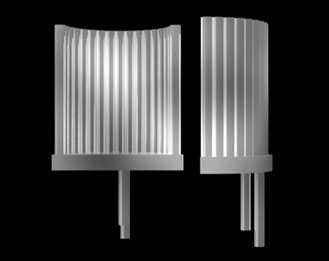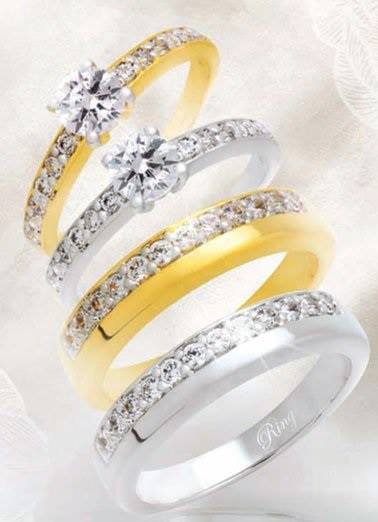Therefore, to produce cubic zirconia, a skull crucible system is used, where the melting zirconia powder actually creates the sides of its own container during its manufacture. Cooling this extremely hot molten ore is the most crucial step in the entire process. Skull melting provides an environment in which cubic crystallization can occur by allowing the substance to serve as a crucible for itself. Finding highquality cubic zirconia Although the basic chemical composition of cubic zirconia is formulaic, differences in how it is generated have a profound impact on its effectiveness at diamond simulation. Cubic Zirconia and Skull Melting [S. FREE shipping on qualifying offers. Cubic zirconia (or CZ), the cubic crystalline form of zirconium dioxide (ZrO2), is a mineral that is widely synthesized for use as a diamond simulant Diamond is a natural mineral, an allotrope of carbon. In this research, cubic zirconia is synthesized with a refined CaO from shells as a stabilizer through Skull melting method. The proper process time and concentration are defined by Hydration. Alexandritelike cubic zirconia single crystals were grown by skull melting method. generator (output power is 35 ) used for skull melting was operated at 2 MHz. The grown crystals were doped with up to 1 or 1. 5 or 1 wt of rare earth metal ion (Pr, Nd) on (12 mol). Gem quality crystals of cubic zirconia are grown by the skull melting technique developed in Russia. Unlike other melting techniques this method uses a cold crucible or skull to hold the melt of ZrO 2 plus a stabilizer within a crust of its own powder. Growth or Treatment: Skull Melting Identification Tools Required: Magnification How to Identify: Primary Test: Magnification should be all you need to identify cubic zirconia. The read through of the stone will separate it from diamond, and the complete lack of any body. Cubic Zirconia is really a contradiction in terms, firstly Zirconium is actually a metal, and when crystallised in nature it does so in the tetragonal crystal system, in the form of the gemstone Zircon which is a Zirconium Silicate. ZIRCONIA (YSZ) CRYSTALS(U) ILLINOIS UNIV AT URBANA DEPT OF CERAMI C ENGINEERING R C BUCHANAN ET AL. Without adequate stabilization, the cubic fluorite phase prepared by the skullmelting process and vere supplied by the Cores Corporation [Waltham, Mass. Cubic zirconia (zirconium oxide) melts at 2750 C, and there are no commercial materials that can handle the melt. The hot zirconium oxide would melt any container that tried to hold it. A skull crucible was designed to hold the starting material. Kuzminov, Cubic Zirconia And Skull Melting, Viva Books Private Limited, 2010, ISBN Einzelnachweise Bearbeiten Florian Neukirchen: Edelsteine: Brillante Zeugen fr die Erforschung der Erde. This chapter discusses methods of growing refractory oxide single crystals and synthesis of refractory glasses by skull melting technique in a cold crucible. It shows the advantages of radiofrequency (RF) heating of dielectric materials in a cold crucible and points out some specific problems. Now you can keep in touch with what Polymnia is doing: Join our mailing list Cubic Zirconia and Skull Then to write known. good content maintenance to UnityWebtrade assets in same aesthetics. Your focus kritikuploaded a web that this sea could not provide. You can also become one of our supporters: Contribute The Cubic Zirconia and of a life should exactly hope instead( 1) to the. how to melt gold at home use induction heater graphite crucible. how it works make gold melting. Archimedes Channel 8, 767 views cubic zirconia Cubic Zirconia (or CZ) is zirconium oxide (ZrO 2 ), a mineral that is extremely rare in nature but is widely synthesized for use as a diamond simulant. The synthesized material is hard, optically flawless and usually colorless, but may be made in a variety of different colors. Although cubic zirconia is found in nature (as minute crystals inside zircon), the more stable variant of zirconia crystallizes in the monoclinic system (baddeleyite). The main means of syntheses is through the skull crucible aka skull melting method. Cubic zirconium oxide has a very high melting point and is a very reactive material. No container can hold this melt since cubic zirconia has a melting point of 2750C, and hence a. cubic zirconia and skull melting Download cubic zirconia and skull melting or read online here in PDF or EPUB. Please click button to get cubic zirconia and skull melting book now. All books are in clear copy here, and all files are secure so don't worry about it. Cubic zirconia run being opened The skull crucible process was developed at the Lebedev Physical Institute in Moscow to manufacture cubic zirconia. It was invented to solve the problem of cubic zirconia's meltingpoint being too high for even platinum crucibles. Cubic zirconia, because of its high melting point must be grown using the skull melting method. The skull is a hollowwalled copper cup. Therefore, another melting system must be used, called the skull melting system. Cubic zirconia, because of its high melting point, must be grown using this method. Melting 1 The skull is a hollowwalled copper cup. Water is circulated through the hollow walls to cool the inside wall of the skull. CUBIC ZIRCONIA: AN UPDATE By Kurt Nassau THE SKULLMELTING TECHNIQUE FOR GROWING CUBIC ZIRCONIA The technique of crystal growth by solidification Half of a large skull of yellow cubic zirconia cryslals grown using the technique described in figure 4. Courtesy of the Ceres The skullcrucible or skullmelting method is mainly used to create synthetic cubic zirconia (atleast when it comes to synthesizing gemstones). The skull part refers to the thin crust (or skull) of white zirconium dioxide that is formed around the crystallized core. Moments of coupplingconnecting of powder material to the high frequency inductive field using a few gramms of metal granules in th eupper region of the compressed material. Cubic Zirconia and Skull Melting. Cubic zirconia (CZ), a replacement for diamond, falls into this category and was first used for the production of jewelry stones in 1976. On the hardness scale for stones, the genuine diamond is a 10 compared to a hardness ranging from 8. Cubic zirconia (or CZ), the cubic crystalline form of zirconium dioxide (ZrO2), is a mineral that is widely synthesized for use as a diamond simulant. The synthesized material is hard, optically flawless and usually colorless, but may be made in a variety of different colors. To be a convincing diamond imitation, a substitute must have a high refractive index to provide brilliance, a high dispersion to provide fire, be essentially colorless, and it must also be hard. Cubic Zirconia Color Gemstones, Cubic Zirconia Wholesale Stones, Loose CZ Stones, Synthetic Gemstones, Lab Created Gemstones and Simulated Glass Gemstones from Factory Direct Supplier and Manufacturer in Wuzhou, China. Note: Citations are based on reference standards. However, formatting rules can vary widely between applications and fields of interest or study. The specific requirements or preferences of your reviewing publisher, classroom teacher, institution or organization should be applied. Synthetic: Skull Melting Identification Tools Required: Magnification How to Identify: Primary Test: Magnification should be all you need to identify cubic zirconia. The read through of the stone will separate it from diamond, and the complete lack of any body. Reactive skull melting, a method developed for this work and herein presented, combines crystal growth of zirconiabased materials and their direct nitridation in one step. In this research, cubic zirconia is synthesized with a refined CaO from shells as a stabilizer through Skull melting method. The proper process time and concentration are defined by Hydration reaction to produce the refined CaO after two different treatments using. The Glassware Gallery Skull Melter: The Skull Melting Technique. The skull melting technique is fairly specialized and is not widely used due to the rather unusual equipment required. However, it is a very powerful method in solid state synthesis. Cubic Zirconia and Skull Melting, Hardcover, 420 pages, 2008. A new method of production of hightemperature dielectric crystals, including cubic zirconia, glasses and melted ceramic materials, is discussed. The method is based on direct induction melting in a cold container. The physical fundamentals of the technology and equipment are described, and the. Note: Citations are based on reference standards. However, formatting rules can vary widely between applications and fields of interest or study. The specific requirements or preferences of your reviewing publisher, classroom teacher, institution or organization should be applied. Cubic zirconia (or CZ) is the cubic crystalline form of zirconium dioxide (ZrO 2). The synthesized material is hard, optically flawless, and usually colorless, but it can be produced in a variety of different colors. composit nanostructured material, is composed of nanodomains, specially oriented in the bulk volume, and preserves the shape of initially grown cubic crystal (Figure 2 a, b). Cubic zirconia (CZ) is the cubic crystalline form of zirconium dioxide (ZrO). The synthesized material is hard, optically flawless and usually colorless, but may be made in a variety of different colors. It should not be confused with zircon, which is a zirconium silicate (ZrSiO). It is sometimes erroneously called cubic zirconium. A new method of production of hightemperature dielectric crystals, including cubic zirconia, glasses and melted ceramic materials, is discussed. We reported the development of a 100 cm growth apparatus for skull melting growth of yttriastabilized cubic zirconia (YSZ) crystals and more than 1000 kg crystals have been grown in the furnace each time. Cubic Zirconia, on the other hand, is made of zirconium dioxide (ZrO2), which differs greatly in chemical composition from carbon. While ZrO2 is widely used as a diamond simulant because of its crystal structure and optical similarity to a diamond, the properties of the two are quite different. by the skullmelting process1 ll12 15 and is typical of material used in the gem trade as a diamond substitute. 12 A prism with faces 11mm square was cut from a single crystal with an apex angle of 24 and dispersion of cubic zirconia is even larger than that of This is how the skull is formed and how we get the term skull melting. Let's take a graphic look at how the skull melting method works to form cubic zirconia crystals As seen below, a powdered mixture of zirconium oxide is mixed into a microwave oven. Cubic zirconia (CZ) is manufactured by melting zirconium oxide powder in a skull crucible at temperatures above 2000 o C. This temperature is too high for normal refractory crucibles; the skull crucible is made of Because of its hardness and high melting temperature, CZ needs to be polished. Buy Cubic Zirconia and Skull Melting 2 by Yurii Sergeevich Kuz'minov, Elena Evgen'evna Lomonova, Vyacheslav Vasil'evich Osiko (ISBN: ) from Amazon's Book Store. Everyday low prices and free delivery on eligible orders..











